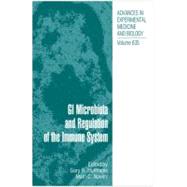
What is included with this book?
| Overview Chapters | |
| Overview of Gut Immunology | p. 1 |
| The Commensal Microbiology of the Gastrointestinal Tract | p. 15 |
| Current Techniques | |
| Overview of the Gastrointestinal Microbiota | p. 29 |
| Effects of Microbiota on GI Health: Gnotobiotic Research | p. 41 |
| Interaction with the Host | |
| Positive Interactions With the Microbiota: Probiotics | p. 57 |
| Negative Interactions With the Microbiota: IBD | p. 67 |
| Role of the Diet | |
| Diet, Immunity and Functional Foods | p. 79 |
| Host-Microbe Signaling | |
| Host-microbe Communication Within The GI Tract | p. 93 |
| Host-Microbe Symbiosis: The Squid-Vibrio Association - A Naturally Occurring, Experimental Model of Animal/Bacterial Partnerships | p. 102 |
| Hypotheses | |
| The "microflora Hypothesis" of Allergic Disease | p. 113 |
| The Damage-Response Framework of Microbial Pathogenesis and Infectious Diseases | p. 135 |
| Index | p. 147 |
| Table of Contents provided by Blackwell. All Rights Reserved. |
The New copy of this book will include any supplemental materials advertised. Please check the title of the book to determine if it should include any access cards, study guides, lab manuals, CDs, etc.
The Used, Rental and eBook copies of this book are not guaranteed to include any supplemental materials. Typically, only the book itself is included. This is true even if the title states it includes any access cards, study guides, lab manuals, CDs, etc.